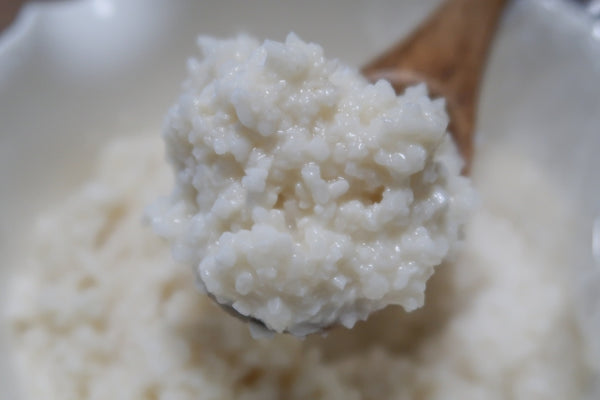Amazake (Japanese Sweet Sake): Rice Koji vs Sake-Lees What's the Difference?

You may have come across amazake (a low/non-alcohol sweet sake) on your travels to Japan, especially if you’ve visited during the New Years period. Often served in small paper cups at shrines during the cold new years period, amazake has a mild, sweet smell and taste.
Nicknamed ‘drinkable IV’ for its health benefits, amazake is Japan’s original superfood dating back to the Kofun period (300 to 538 AD).
There are two main types of amazake - one made with rice mold (koji) and another made with sake-lees.
Rice Koji Amazake

Most people are more familiar with koji-based amazake. It is made by growing koji (a type of fermentation culture) on steamed rice. Through the fermentation process, the rice starch is converted into glucose, creating a natural sweetness. Thus, koji-based amazake is slightly sweet and retains a pulpy texture from the leftover rice used in the cooking process.
Rice koji amazake is high in carbohydrates as well as vitamin E and many other minerals, making it a nutritious drink.
Sake Lees Amazake

Sake-lees are the leftover by-product of sake after it has been fermented. Both koji-based amazake and sake-lees amazake are involved in the process of making sake. However, rice koji is produced before alcohol in the sake-making process whilst lees are produced after.
By the time sake-lees amazake has been made, it has been fermented three times with rice koji, yeast, and lactic acid bacteria. Thus, it has a rich scent and deeper flavor than that of koji-based amazake. Due to the triple fermentation process, it also has a higher nutritional value, containing many minerals and vitamins as well as fiber and protein.

Alcohol Content
It is often believed that all amazake contains alcohol. However, only sake-lees amazake does as it is a by-product of sake production. That being said, most commercially produced sake-lees amazake has less than 1% alcohol content.
So which one should you try? As with any food or beverage, taste is the most important, so why not try both and explore the rich world of this traditional Japanese drink.
About the author:

Ailsa van Eeghen
Ailsa has been living in Japan since 2015 all the while enjoying the rich beauty of Kagoshima prefecture. She finds the most joy in exploring little villages, driving around the countryside and exploring the lesser known parts of Japan. Keenly interested in Japan’s regional diversity, you can often find her at michi-no-eki admiring all the local produce. You can find more of her travels and deep dives into Japanese culture on her Instagram @daysofailsa where she writes about her life in Japan.




